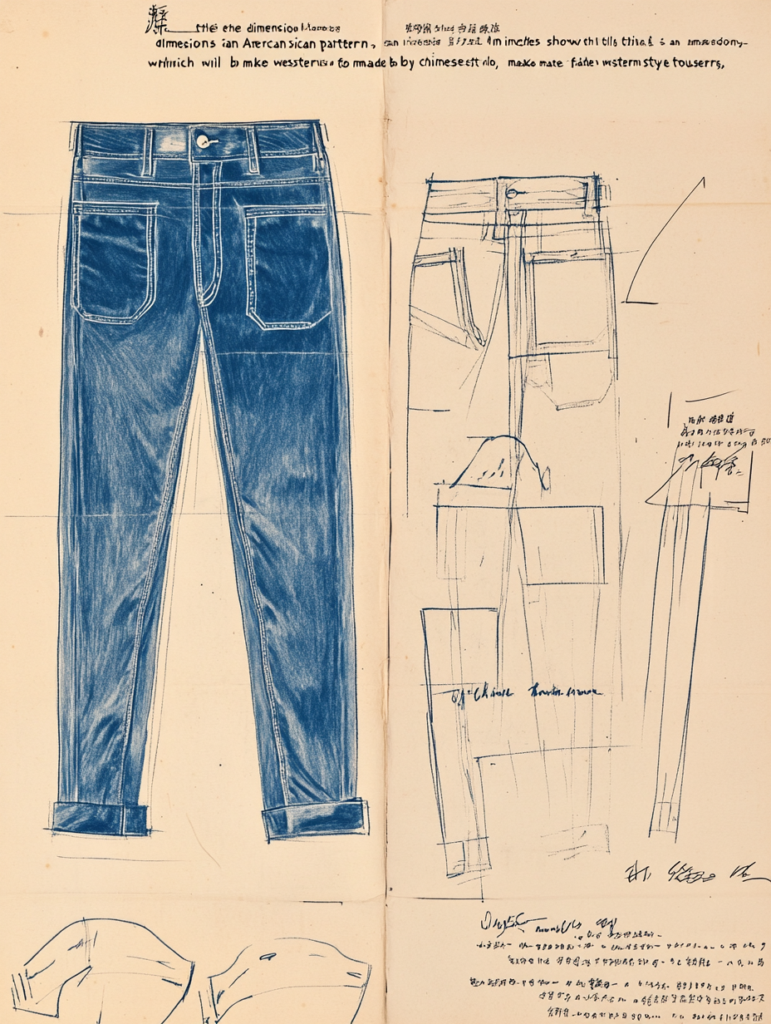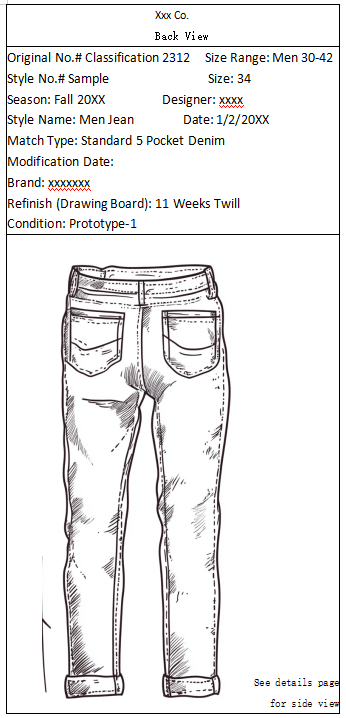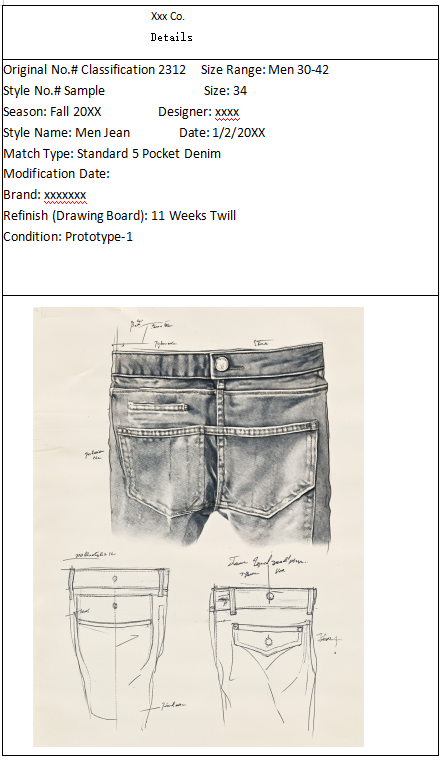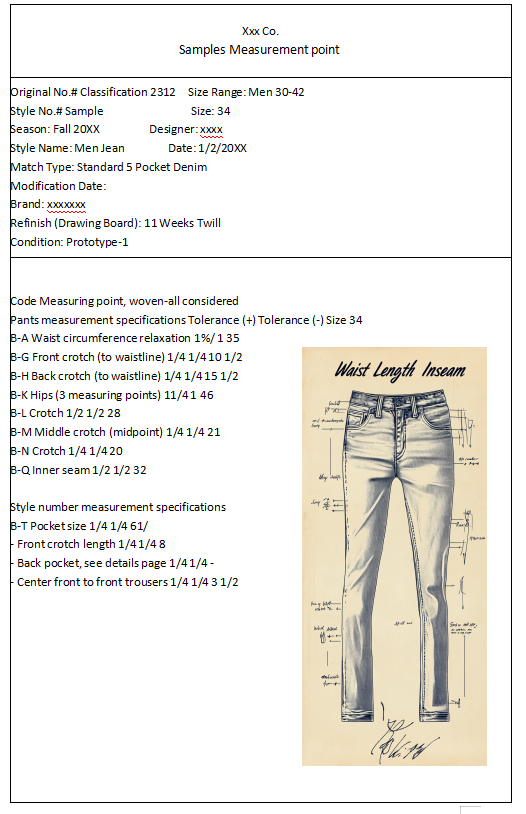
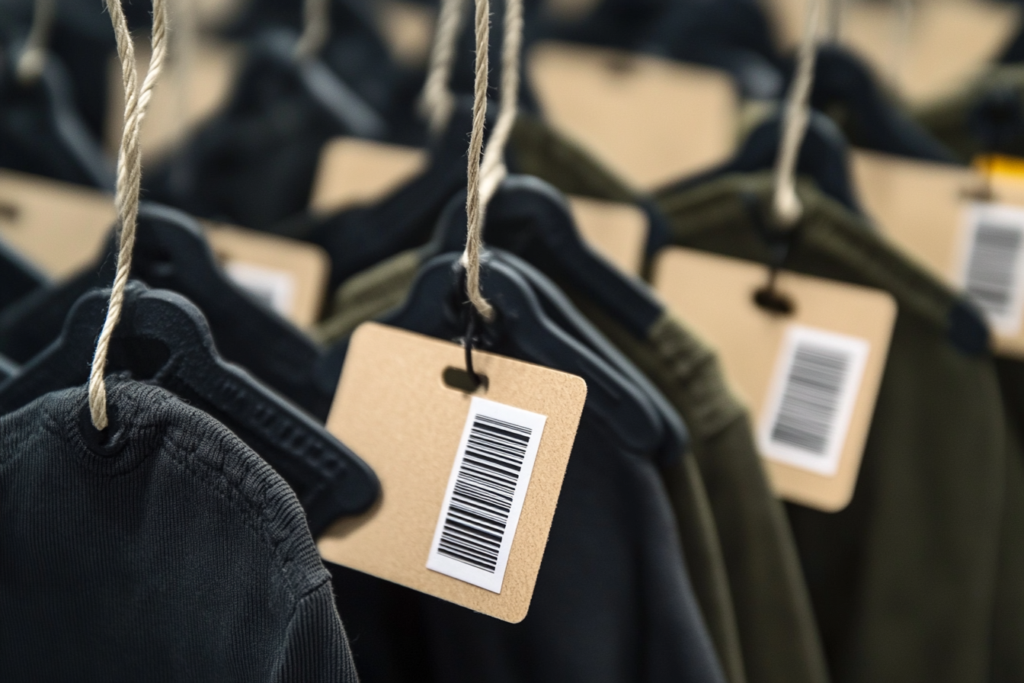
Labels and Packaging: Essential Instructions for Garment Finalization and Shipment
The Labels and Packaging section of a process sheet is a critical component in ensuring that garments are properly finished and prepared for shipping. This section outlines all the necessary steps for labeling the garment, including how to attach labels, tags, and other required markings. It also provides detailed instructions for packaging the garments to prevent damage during transit, ensuring that they arrive in perfect condition at their destination.
Clear and thorough labeling and packaging instructions are essential for several reasons:
- Branding and Identification: Labels and tags provide important brand identity and care instructions for consumers.
- Compliance: Specific labels, such as care labels, size labels, and safety information, are legally required in many markets.
- Quality Control: Proper packaging helps preserve the quality of the garment during transportation, reducing the risk of damage, stains, or wear.
- Customer Experience: A well-packaged product reflects positively on the brand and ensures the customer receives the item in pristine condition.
Purpose of the Labels and Packaging Section
The Labels and Packaging section serves several purposes:
- Brand and Identity: Labels and tags communicate the brand’s identity, values, and product details to the consumer. They help build brand recognition and trust.
- Product Information: Labels provide important product information, including care instructions, size details, and fabric composition, ensuring the customer knows how to properly care for the garment.
- Packaging Integrity: Proper packaging prevents garments from being damaged during transit, ensuring they arrive at their final destination without defects, wrinkles, or stains.
- Compliance: The section ensures that all required labels (such as care labels, country of origin, and size labels) are included to meet legal and regulatory requirements.
Key Elements Included in the Labels and Packaging Section
Labeling Requirements
- Labels serve multiple purposes, including brand identity, care instructions, and size details. This section provides detailed instructions on which labels are required and how they should be applied to the garment.
Common types of labels include:
- Brand Label: The primary label that identifies the brand or manufacturer. This is often sewn into the neckline or waistband of the garment.
- Location: Typically placed at the back neck for tops and dresses, or at the inside waistband for pants or skirts.
- Material: May be woven or printed on fabric or satin.
- Size Label: Indicates the size of the garment (e.g., XS, S, M, L, XL). The size label is usually sewn into the inside back neck or the side seam.
- Care Label: Provides essential care instructions, such as washing, drying, ironing, and special instructions for dry cleaning or delicate fabrics.
- Content: Should include symbols or written instructions (e.g., “machine wash cold,” “do not bleach,” “iron on low heat”).
- Material: Typically made from soft, flexible fabric like cotton or polyester to ensure comfort and durability.
- Country of Origin Label: This label specifies where the garment was made, which is a legal requirement in many countries.
- Fiber Content Label: Specifies the fabric content, such as “100% cotton” or “80% polyester/20% spandex.” This is particularly important for consumers with fabric sensitivities or allergies.
Example Labeling Instructions:
- Brand Label: Sew brand label in the center back neck of the garment using a woven label with white background and black text.
- Care Label: Attach care label on the left side seam, ensuring it is visible but does not interfere with the garment’s fit.
- Size Label: Place size label on the inside center back, under the brand label, in a white fabric with black text.
These instructions help ensure that the correct labels are placed in the correct locations with the appropriate details.
Tagging Instructions
- In addition to labels, garments often require tags that provide additional product information such as price, style number, or promotional messages. Tags may also be used for security purposes in retail settings.
Common types of tags include:
- Hangtags: Used primarily for promotional purposes, often attached to the garment with a string or plastic fastener. Hangtags typically display information such as price, brand, and product details.
- Location: Generally attached to the shoulder seam, neckline, or waistband.
- Material: Paper, cardboard, or plastic, often printed in color to align with the brand’s aesthetic.
- Security Tags: Often used in retail settings to prevent theft. These are typically attached to garments with a pin or adhesive.
- Location: Usually placed at an inconspicuous area like the inside hem or waistband, often removed by the retailer during purchase.
Example Tagging Instructions:
- Hangtag: Attach hangtag with a white string at the left shoulder seam for visibility.
- Security Tag: Secure the security tag on the inside waistband using a pin for discreet placement.
Tags not only provide additional information but also contribute to the garment’s presentation and consumer experience.
Packaging Instructions
- The Packaging Instructions section provides detailed guidelines on how the garment should be folded, packed, and prepared for shipment. Proper packaging helps prevent wrinkles, damage, and contamination during transit and ensures that the garment reaches the customer in pristine condition.
Key packaging details include:
- Folding Instructions: The garment should be folded neatly to prevent creases and maintain the intended shape.
- Folding Technique: Specify how the garment should be folded (e.g., “fold sleeves inward, fold body in half, and fold in thirds”).
- Polybags or Packaging Materials: Many garments are packaged in clear plastic bags or protective materials to prevent dust, dirt, and moisture during shipping.
- Bag Size: Specify the size of the polybag or box needed for each garment to ensure it fits properly and is protected.
- Labels on Packaging: For retail packaging, include any necessary shipping labels, barcodes, or SKU numbers that can help track the product during shipping.
- Boxing/Carton Instructions: If garments are packed in bulk for shipping, specific instructions about how many garments to place per box or carton, as well as how to seal and label the box, should be provided.
- Quantity Per Box: Specify the number of garments per box or carton.
- Sealing Instructions: Indicate how to seal boxes (e.g., with tape or adhesive).
- Shipping Labels: Provide clear instructions for attaching shipping labels to boxes or packages, including any barcodes or other tracking information.
Example Packaging Instructions:
- Folding: Fold the garment along the shoulder seams and fold sleeves inward, then fold the body of the garment in half vertically.
- Polybag: Place each folded garment inside a clear 18” x 24” polybag, sealing it to prevent dust contamination.
- Boxing: Place 20 garments per carton, ensuring that each garment is individually wrapped and placed neatly in the box. Seal with packing tape and affix shipping label with SKU on the top of the carton.
Proper packaging ensures that the garment is protected during transport, maintains its appearance, and arrives in optimal condition for the customer.
- Special Packaging Considerations
- In some cases, garments require special packaging considerations, especially for high-end items or garments made from delicate fabrics.
- Garments with Embellishments: If a garment has delicate embroidery, beads, or sequins, it should be packed in a way that prevents damage to these decorative elements.
- Packaging: Use a padded bag or protective tissue paper to wrap the garment before placing it in a polybag.
- Hangtags for Display: If the garment is being shipped to a retail store for display, it might need to be hung on a hanger inside a clear garment bag.
- Fragile Fabrics: For delicate fabrics like silk, satin, or wool, the garment may need to be packaged with extra care, such as placing it in a breathable garment bag to avoid moisture buildup.
